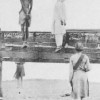
Priti Joshi, “1857; or, Can the Indian ‘Mutiny’ Be Fixed?”
In the 150 years since it occurred, little about the events that shook northern India in the waning days of the East-India Company’s rule has been fixed. The skeletal facts are seldom contested, but their meanings so disputed that what is known appears to recede. Take, for instance, the nomenclature: long known as the “Indian Mutiny,” the events under scrutiny were neither “Indian” (in any pan-Indian or collective sense) nor only a “mutiny.” Alternatives abound—Sepoy Mutiny; Sepoy War; Revolt of 1857; the Uprising of 1857; the Rebellion of 1857; the Great Rebellion; the First War of Independence—each offering an interpretive gloss on the May 1857-June 1858 events. This essay offers an overview of key nodes of debate—who participated and why? who led whom? how planned were the events? how unified were actors—in the current historiography of 1857.
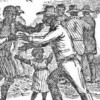
Isaac Land, “On the Foundings of Sierra Leone, 1787-1808”
This article offers a critical reading of who was sent to Sierra Leone, why West Africa was chosen as the destination, and discusses the larger meanings, contexts, and legacies of the “Province of Freedom.”
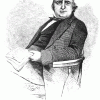
Lesa Scholl, “Irish Migration to London During the c.1845-52 Famine: Henry Mayhew’s Representation in London Labour and the London Poor“
The Great Irish Famine (c. 1845-52) was marked by mass emigration that had a significant impact on the British mainland. This paper examines Henry Mayhew’s representation of Irish migration to London during the height of the famine in his ethnographic study, London Labour and the London Poor. Mayhew’s ambivalence to Irish migration speaks to the widespread fears within Britain of the spread of disease, overpopulation, and increased pressures on wages and employment, but also expresses empathy for the Irish at a time when British sympathies were waning. The domestic spaces of the Irish migrants depict the tensions between mobility and settlement in a way that reinforces their permanence in the British social landscape
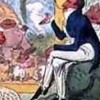
Timothy Johns, “The 1820 Settlement Scheme to South Africa”
The 1820 settlement scheme to South Africa marks an important conjuncture both for the colony’s internal development and for the rhetoric of immigration in the internal politics of Britain. Examining the rationale for the venture in light of the seminal historical event of the age—the Peterloo Massacre of 16 August 1819—and in light of Romantic notions of the “Noble Savage,” this entry attempts to demonstrate how concerns surrounding the South African scheme came to be entangled within larger debates over joblessness, slavery, class struggle, and inanition in early nineteenth-century British culture. Limiting its focus to a reading of The Emigrant’s Cabin (1822, 1834), a poem by the settler-poet Thomas Pringle (1789-1834), the entry argues that 1820 settler rhetoric navigated debates over labor through a novel engagement with time. By imagining a two-tiered system of labor time in the poem—one for settlers, based on unemployment relief and freedom from the oppressive pace of industrial life; and one for the African labor force on the eastern Cape farms, based on missionary discipline, a proto-Victorian program of “improvement,” and freedom from slavery—Pringle’s verse helped foster a British cultural identity in the Cape that resonates even today.
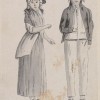
Julie M. Barst, “The Molesworth Report and the Dissolution of Convict Transportation to Australia, August 1838”
This entry focuses upon convict transportation to Australia (which spanned eight decades from 1788 to 1868) and argues that the Molesworth Report of 1838, which successfully built upon the rhetoric of the abolition movement by drawing connections between convicts and slaves, became one of the major deciding factors in eventually putting an end to the entire system of transportation. I claim that the report not only raised questions about the effectiveness of the system, but also generated sympathy for the convicts and led to a transformation in how Britons thought about the punishment of their criminal classes.

Anne Clendinning, “On The British Empire Exhibition, 1924-25”
The British Empire Exhibition, held in 1924 and 1925, assembled the member nations of the empire to develop imperial trade connections and to cultivate closer political ties between Britain and her territories. A commercial, educational and imperial spectacle, the exhibition reminded Britons of the material and political value of the empire, as the nation struggled to recover from the economic impact of the Great War. For some colonial participants, however, the British Empire Exhibition enabled them to present a distinct national identity in pursuit of greater autonomy from Britain, while for others, it provided a forum in which to critique racial discrimination within the empire.

Sharon Aronofsky Weltman, “1847: Sweeney Todd and Abolition”
The prolific (but rarely remembered) Victorian playwright George Dibdin Pitt wrote the first Sweeney Todd dramatization in 1847 for the Britannia in London’s East End, tailoring his melodrama for the theater’s particular audience and the acting company’s individual talents. Not published until 1883 in Dick’s Standard Plays (as Sweeney Todd: The Barber of Fleet Street, or The String of Pearls), the printed play differs significantly from Dibdin Pitt’s original, which was initially performed on 1 March 1847 as The String of Pearls, or The Fiend of Fleet Street. Scholars who rely on the 1883 Sweeney Todd to discuss the 1847 melodrama are in many respects talking about a different play. One major difference involves a main character who appears only in the 1847 version. In the 1846-47 novel, a faithful dog named Hector is important to the plot; in the 1847 play, he is transformed into a major heroic character who foils the play’s villains — no longer a dog, but a deaf-mute black boy, a former slave from British Honduras who loyally continues to serve his former owner and current employer out of love and gratitude for his freedom. By including this character, Dibdin Pitt takes an identifiably abolitionist stance, working through what was still England’s strong sense of moral achievement in abolishing slavery and still strong sense of purpose in working to end slavery in the United States. But by 1883, in regards to race and colonialism, the cultural work of Dibdin Pitt’s play without Hector operates through an unthinking backdrop of the Empire’s power and the status quo of racial hierarchy.
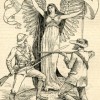
Jo Briggs, “The Second Boer War, 1899-1902: Anti-Imperialism and European Visual Culture”
The Second Boer War, part of the “Scramble for Africa” among European powers, was fought from 1899 and 1902 in what is now South Africa between British Imperial forces and the Transvaal Republic and Orange Free State. The war occurred during the period of so-called New Imperialism (ca. 1880 to 1914) characterized by rising nationalism, racism, Social Darwinism, and genocidal thinking. Occurring roughly in the middle of this period, the Second Boer War became the focal point for a variety of hopes, anxieties, politics, and ideologies. An examination of periodicals created specifically to protest against the war shows that the conflict resonated within diverse local contexts, revealing the complex interplay between global events and local politics.

Lorraine Janzen Kooistra, “The Moxon Tennyson as Textual Event: 1857, Wood Engraving, and Visual Culture”
By convention the launch of the so-called “golden age” of wood-engraved illustration in Britain, also known as “the sixties,” is Edward Moxon’s publication, in May 1857, of Alfred Tennyson’s Poems, with 54 wood-engraved illustrations designed by 8 artists, including the Pre-Raphaelites John Everett Millais, William Holman Hunt, and Dante Gabriel Rossetti. Although the Moxon Tennyson was neither a commercial nor critical success on first publication, before the decade was out its Pre-Raphaelite designs were considered a touchstone for artistic illustration, a reputation that continues today. Without disputing the significance of this aesthetic achievement, I want to shift critical focus to the Moxon Tennyson’s status as mass-produced work of art in the age of mechanical reproduction. My interest here is in how its visual communication was expressed through its reproductive technology at the historical moment of its production and reception. This essay re-positions the Moxon Tennyson as a textual event by reading it in the context of documentary, satiric, and artistic wood-engraved images selected from the crucial six-month period after its publication. By situating the Pre-Raphaelite illustrations for Tennyson’s Poems in relation to representations in the public press of such disparate events as the Art Treasures of the United Kingdom Exhibition in Manchester, the reportage on Indian uprisings at Meerut and Cawnpore, the Matrimonial Causes Act, and the Christy Minstrels show in London, I aim to show the complex ways in which the Moxon Tennyson was a worldly event, caught up in, and contributing to, ways of seeing and knowing in 1857.
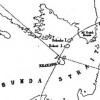
Monique R. Morgan, “The Eruption of Krakatoa (also known as Krakatau) in 1883”
This essay gives a brief overview of the events of 26-27 August 1883, when the volcanic island of Krakatoa in Indonesia exploded; it generated tsunamis which killed over 36,000 people, was heard 3,000 miles away, and produced measurable changes in sea level and air pressure across the world. The essay then discusses the findings of the Royal Society’s Report on Krakatoa, and the reports in the periodical press of lurid sunsets resulting from Krakatoa’s dust moving through the atmosphere. It closes by examining literature inspired by Krakatoa, including a letter by Gerard Manley Hopkins, a poem by Alfred Tennyson, and novels by R. M. Ballantyne and M. P. Shiel.
